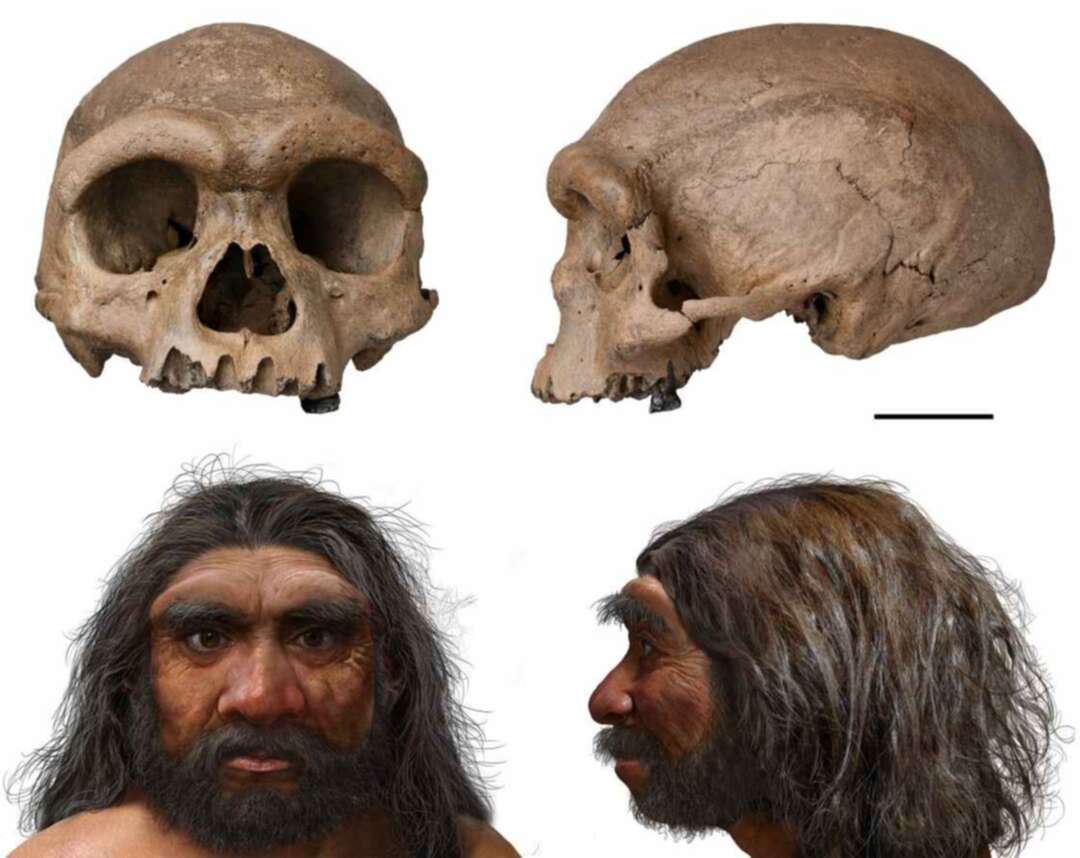-
Discovery of 'Dragon Man' may change the concept of human evolution

According to NBC, scientists said Friday, that new species of ancient human dubbed Homo longi, or "Dragon Man," could potentially change the way we understand human evolution. Dragon Man
The discovery of the new species is connected to a skull known as the Harbin cranium, a fossil thought to have been discovered decades ago but only recently studied.
NBC quoted Qiang Ji, a professor at Hebei Geo University in China as saying, the name “Dragon Man” is derived from the geographic name Long Jiang, which is commonly used for the Heilongjiang province and literally means “dragon river.”
The study conducted by an international team and led by Qiang Ji added that the skull, which is about 9 inches long and more than 6 inches wide, is big enough to hold a brain that is similar in size to that of a modern human — around 3 pounds (1,420ml) in brain volume. Researchers believe it belonged to a male, aged about 50.
The cranium is thought to have been discovered in 1933 when a bridge was built over the Songhua River in Harbin City, in China’s Heilongjiang province, the study said, adding that information about the exact site was lost because of its "long and confused history." Dragon Man
Junyi Ge, from the Chinese Academy of Sciences and one of the study’s team members, said they were “quite confident” that it was more than 146,000 years old.
Researchers said in their findings, published Friday as three separate papers in the journal The Innovation, that Homo longi could replace Neanderthals as the closest relative to our own species, Homo sapiens.
NBC reported, citing Xijun Ni, a professor of primatology and paleoanthropology at the Chinese Academy of Sciences and Hebei GEO University, and author of two of the papers, as saying to AP, "It is widely believed that the Neanderthal belongs to an extinct lineage that is the closest relative of our own species."
"However, our discovery suggests that the new lineage we identified that includes Homo longi is the actual sister group of Homo sapiens."
The Harbin cranium "also shows other features resembling our species,” Chris Stringer, another of the authors, said in a news release about the findings from London’s Natural History Museum, where he works as a research leader.
"It has flat and low cheekbones with a shallow canine fossa, and the face looks reduced and tucked under the brain case," he added. Dragon Man
Source: NBC
Image source: Chuang Zhao-NBC
You May Also Like
Popular Posts
Caricature
BENEFIT Sponsors BuildHer...
- April 23, 2025
BENEFIT, the Kingdom’s innovator and leading company in Fintech and electronic financial transactions service, has sponsored the BuildHer CityHack 2025 Hackathon, a two-day event spearheaded by the College of Engineering and Technology at the Royal University for Women (RUW).
Aimed at secondary school students, the event brought together a distinguished group of academic professionals and technology experts to mentor and inspire young participants.
More than 100 high school students from across the Kingdom of Bahrain took part in the hackathon, which featured an intensive programme of training workshops and hands-on sessions. These activities were tailored to enhance participants’ critical thinking, collaborative problem-solving, and team-building capabilities, while also encouraging the development of practical and sustainable solutions to contemporary challenges using modern technological tools.
BENEFIT’s Chief Executive Mr. Abdulwahed AlJanahi, commented: “Our support for this educational hackathon reflects our long-term strategic vision to nurture the talents of emerging national youth and empower the next generation of accomplished female leaders in technology. By fostering creativity and innovation, we aim to contribute meaningfully to Bahrain’s comprehensive development goals and align with the aspirations outlined in the Kingdom’s Vision 2030—an ambition in which BENEFIT plays a central role.”
Professor Riyadh Yousif Hamzah, President of the Royal University for Women, commented: “This initiative reflects our commitment to advancing women in STEM fields. We're cultivating a generation of creative, solution-driven female leaders who will drive national development. Our partnership with BENEFIT exemplifies the powerful synergy between academia and private sector in supporting educational innovation.”
Hanan Abdulla Hasan, Senior Manager, PR & Communication at BENEFIT, said: “We are honoured to collaborate with RUW in supporting this remarkable technology-focused event. It highlights our commitment to social responsibility, and our ongoing efforts to enhance the digital and innovation capabilities of young Bahraini women and foster their ability to harness technological tools in the service of a smarter, more sustainable future.”
For his part, Dr. Humam ElAgha, Acting Dean of the College of Engineering and Technology at the University, said: “BuildHer CityHack 2025 embodies our hands-on approach to education. By tackling real-world problems through creative thinking and sustainable solutions, we're preparing women to thrive in the knowledge economy – a cornerstone of the University's vision.”
opinion
Report
ads
Newsletter
Subscribe to our mailing list to get the new updates!






















